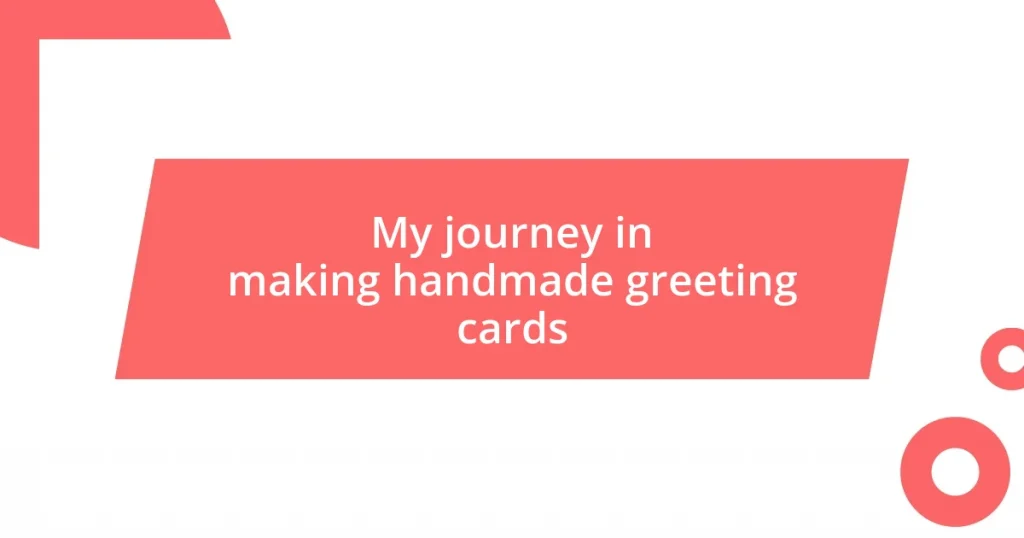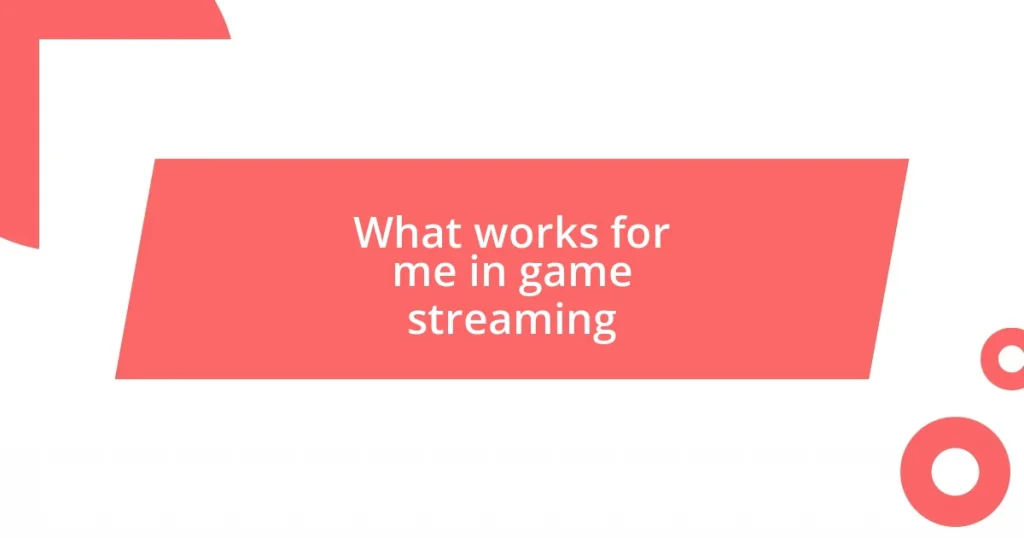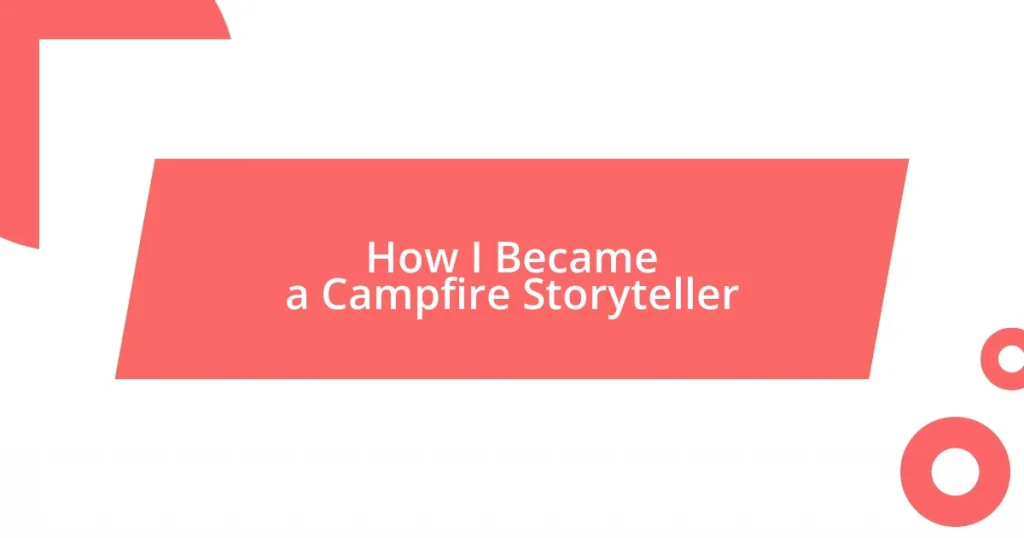Key takeaways:
- Inspired by personal experiences and nature, creating cards serves as both a form of self-expression and a way to connect with loved ones.
- Choosing the right materials and techniques, like layering and color blending, significantly enhances the aesthetic and emotional impact of greeting cards.
- Sharing the card-making journey fosters community, offers inspiration to others, and highlights personal growth in creativity.
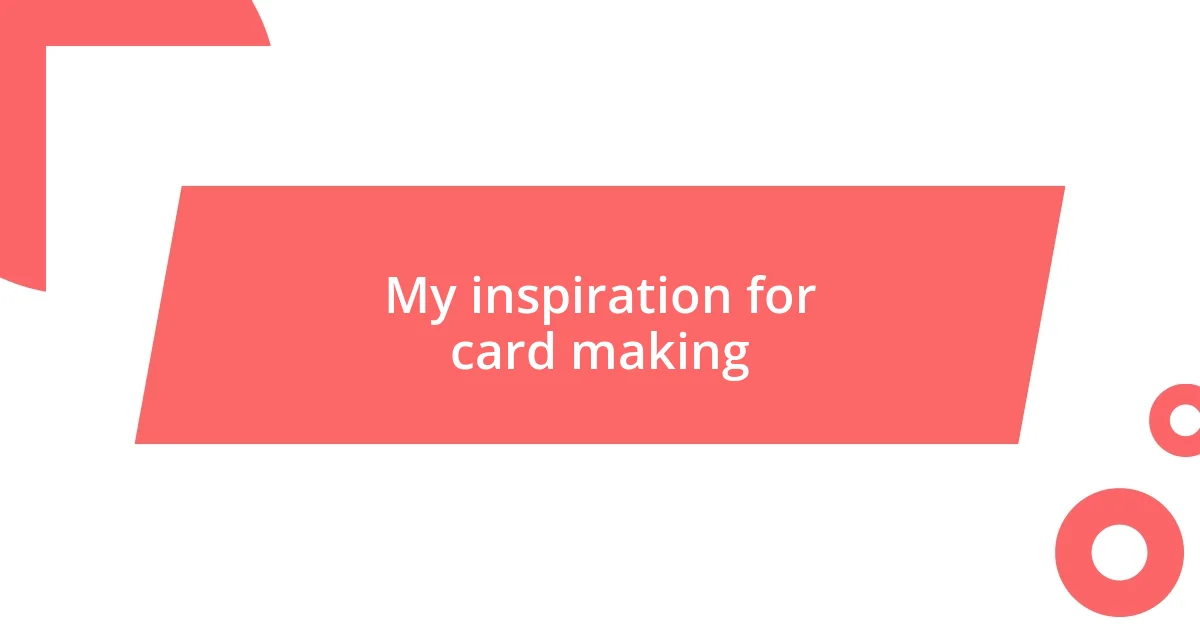
My inspiration for card making
My inspiration for card making often stems from the little moments in life that resonate deeply with me. I remember a rainy afternoon when I stumbled upon an old box of letters and cards from friends and family. Reading those heartfelt messages, I felt a wave of nostalgia and realized how meaningful a simple card can be in brightening someone’s day.
Often, I find that nature ignites my creativity. On a recent walk in the park, I was captivated by the vibrant colors of the flowers and the gentle sway of the trees. How could I not capture that beauty? I returned home, filled with ideas, and created a series of cards inspired by the seasons, each one reflecting the unique beauty of nature.
There’s something undeniably special about crafting a card with the recipient in mind. One year, I made a card for my grandmother’s birthday, using her favorite colors and incorporating personal touches that reminded her of our special moments together. I still recall the joy in her eyes when she opened it, and it struck me that the effort I put into creating something personal truly mattered. What better motivation is there than the chance to bring a smile to someone you love?
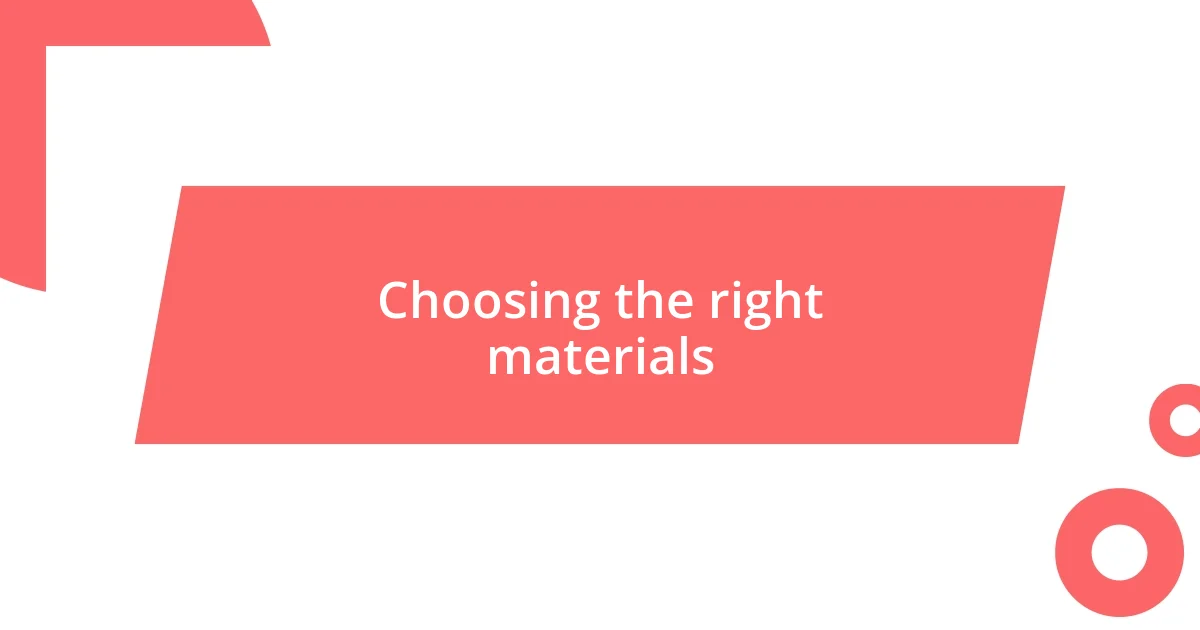
Choosing the right materials
Choosing the right materials can be a game-changer in the art of handmade greeting cards. I often experiment with different types of paper, each offering unique textures and colors that can elevate the overall design. For instance, cardstock provides a sturdy base that feels substantial in hand, while patterned papers can add visual interest and depth. There’s something exciting about feeling the material between my fingers, as it sparks creativity and helps me decide how to best express the sentiment I want to convey.
When it comes to embellishments like stamps, ribbons, and stickers, I find they can either enhance or detract from my card’s overall message. I once used a beautiful satin ribbon on a birthday card for my sister, wrapping it carefully around the card like a gift. The ribbon added dimension and elegance that a simple design might have lacked. I encourage you to consider how each material echoes the card’s emotion and theme—sometimes less really is more.
Finally, choosing the right adhesives is often an overlooked yet crucial aspect. I remember once using a glue stick for a delicate layered card, and it made parts of the design lift and sag—definitely not the effect I wanted! Instead, I’ve found that double-sided tape or glue dots provide a clean finish and reliability. Materials matter, and making thoughtful choices leads to pieces that resonate well with the recipient.
| Material | Purpose |
|---|---|
| Cardstock | Sturdy base for card design |
| Patterned Paper | Adds visual interest |
| Ribbons | Enhances elegance and dimension |
| Adhesives | Secures elements together neatly |
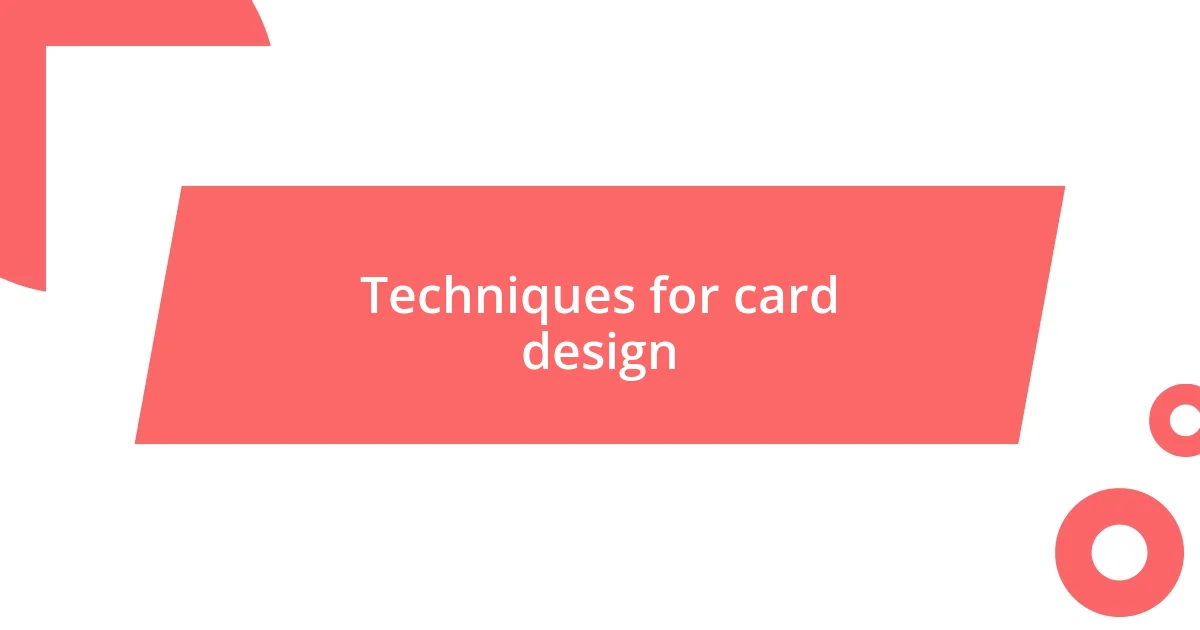
Techniques for card design
I have found that exploring various techniques in card design can truly elevate my creations. One approach I enjoy is layering different elements. It creates depth and intrigue—like when I assembled a collage of pressed flowers on a birthday card. The way each petal catches the light adds a tactile experience that makes the card feel alive. I often mix colors and textures, striving for that harmonious balance; each addition should feel intentional and contribute to the overall message.
Here are some techniques I use regularly:
- Layering: Stacking various materials (like paper and fabric) to create depth.
- Stenciling: Using templates to add intricate designs or shapes without freehand skills.
- Watercoloring: Painting backgrounds or elements to add a personal, artsy touch.
- Embossing: Creating raised designs, giving a tactile aspect to the card.
- Hand-lettering: Writing personalized messages in creative fonts to showcase unique styles.
Lately, I’ve also been experimenting with color blending techniques. When I experimented with blending shades of blue and yellow for a sunny friendship card, I was surprised at how much it transformed the feel of the design. It’s like capturing a moment of joy on paper! I felt a sense of accomplishment as I saw the colors come together seamlessly, echoing the warmth of the relationship it represented. Each technique I learn brings me closer to expressing the sentiments I have for my loved ones.
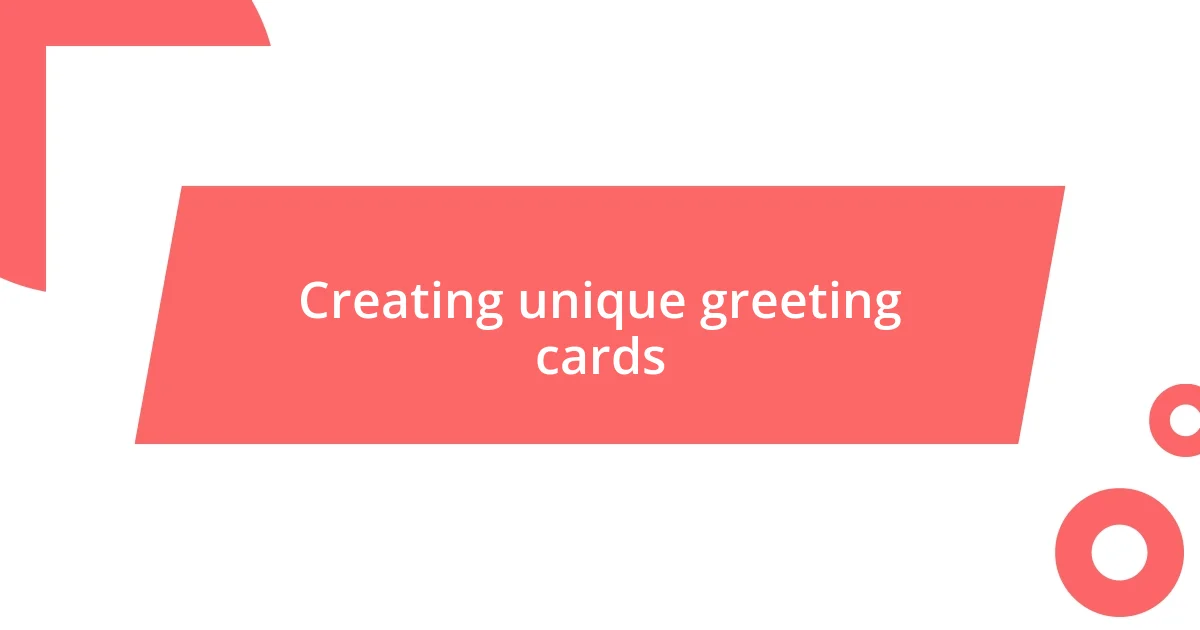
Creating unique greeting cards
Creating unique greeting cards often revolves around personalization, and I love infusing my own flair into every piece. For one card, I decided to incorporate a small photograph of my dog alongside the handwritten message. This simple addition made the card not just a greeting but a cherished keepsake. Have you ever considered how a personal touch can transform a standard card into a heartfelt expression? It’s amazing how such small details can resonate deeply.
I frequently find inspiration in colors and patterns that reflect my mood or the theme of the occasion. Recently, for a wedding card, I was drawn to a soft pastel palette. I chose a light peach paper and adorned it with gold foil accents—something I’ve never tried before. The way the light caught the foil made the card shimmer, almost like the couple embarking on their new journey together. Sometimes, it’s about exploring uncharted territory in design; what if you tried a color combination you’ve never used? The result might surprise you!
For me, creating unique greeting cards isn’t just about the end product; it’s about the journey of expression. On days when I feel a bit down, crafting a card with bright colors and uplifting messages serves as therapy. I remember pouring my heart into a get-well-soon card filled with cheerful yellows and greens after a friend had surgery. Not only did I find joy in creating it, but seeing the smile it brought her felt like magic. It’s these moments that remind me of the power of a unique card—it can carry emotions that words alone sometimes can’t express.
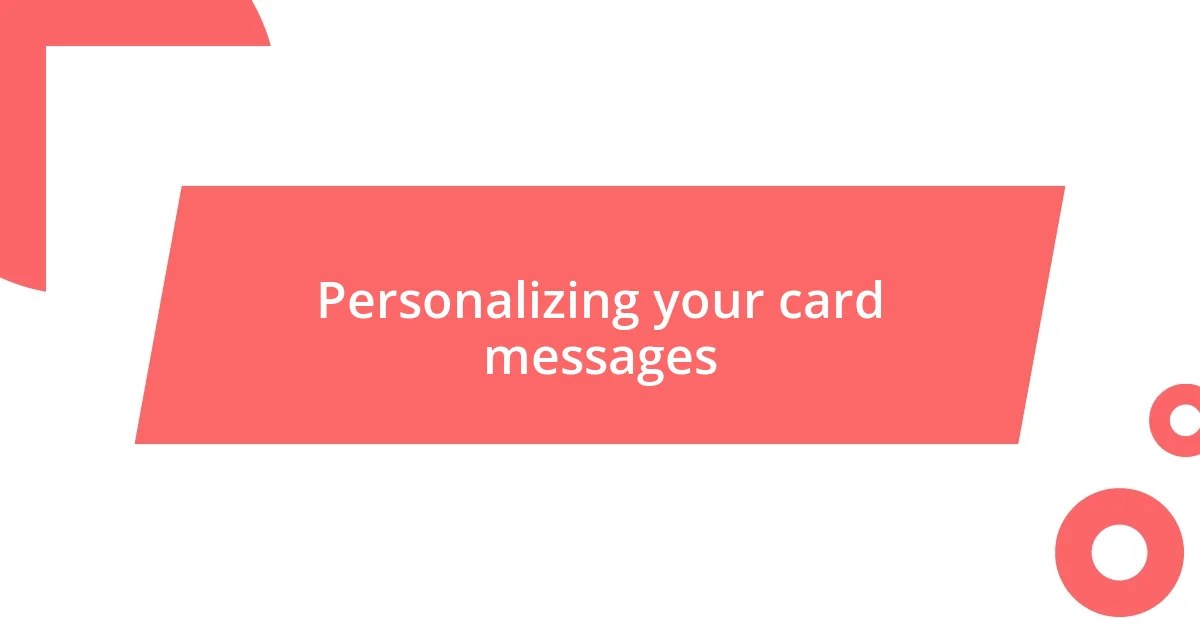
Personalizing your card messages
Personalizing your card messages is truly what sets them apart. I vividly remember crafting a sympathy card for a dear friend after her loss. Instead of just signing my name, I took the time to write a heartfelt note about a cherished memory we shared. It transformed a simple gesture into a comforting embrace, showing her that I was there for her in that difficult time. Isn’t it incredible how a few carefully chosen words can provide solace when it’s needed most?
When I think about my own experiences, I often find that humor can also be a fantastic way to personalize messages. For instance, I once wrote a playful note on a birthday card featuring a hilarious photo of my friend from college. I complemented it with the joke, “Aging like fine wine—too corked to care!” The laughter that followed once she opened it reminded me of the powerful connection we share. Have you ever considered using humor in your cards? It leaves a lasting impression and often becomes a cherished memory.
I’ve learned that incorporating quotes can add a special touch too. On one occasion, I wrote a quote from our favorite movie on a congratulations card for my cousin’s new job. It was something that resonated with both of us, and it conveyed my excitement for her in a personal way. The moment she read it, her eyes lit up—just a simple note made all the difference. Think about what quotes might resonate with your loved ones; it’s a simple yet profound way to enhance your card’s message.
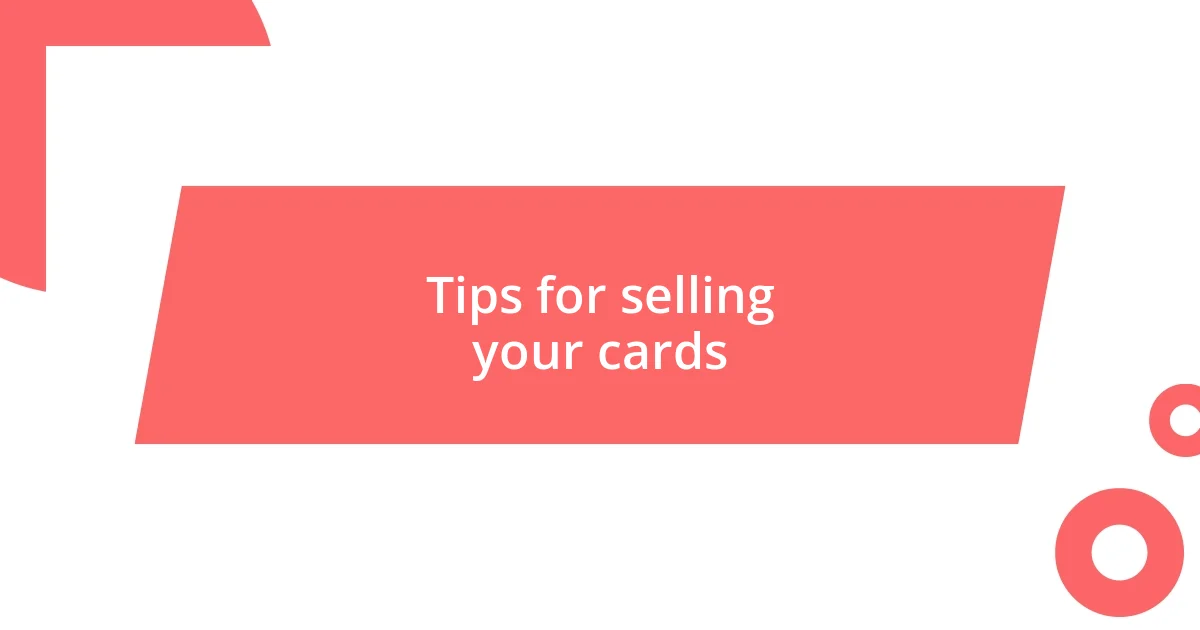
Tips for selling your cards
When it comes to selling handmade greeting cards, understanding your audience is essential. I was once surprised by how a simple survey on social media revealed that people loved cards with nature themes. This insight helped me create a line of floral designs that sold out quickly at a local craft fair! Have you thought about what themes resonate most with your potential customers?
Setting up an inviting display can make a significant impact too. During a recent craft show, I arranged my cards in a way that highlighted their unique features, like their textured finishes and vibrant colors. I also added small props, like a vintage typewriter and fresh flowers, to create a warm atmosphere. It drew people in, and many left with more than one card. What kind of elements could you include to enhance your booth’s appeal?
Finally, don’t underestimate the power of storytelling while selling. Each time I introduce my cards, I share the inspiration behind them—a trip to a flower market or a cherished family memory. It creates an emotional connection with buyers. When I shared why I decided to design a card dedicated to my late grandmother’s favorite flower, I noticed customers were genuinely touched. It made them want to take a piece of that story home with them. Have you considered how your own stories might captivate your audience?
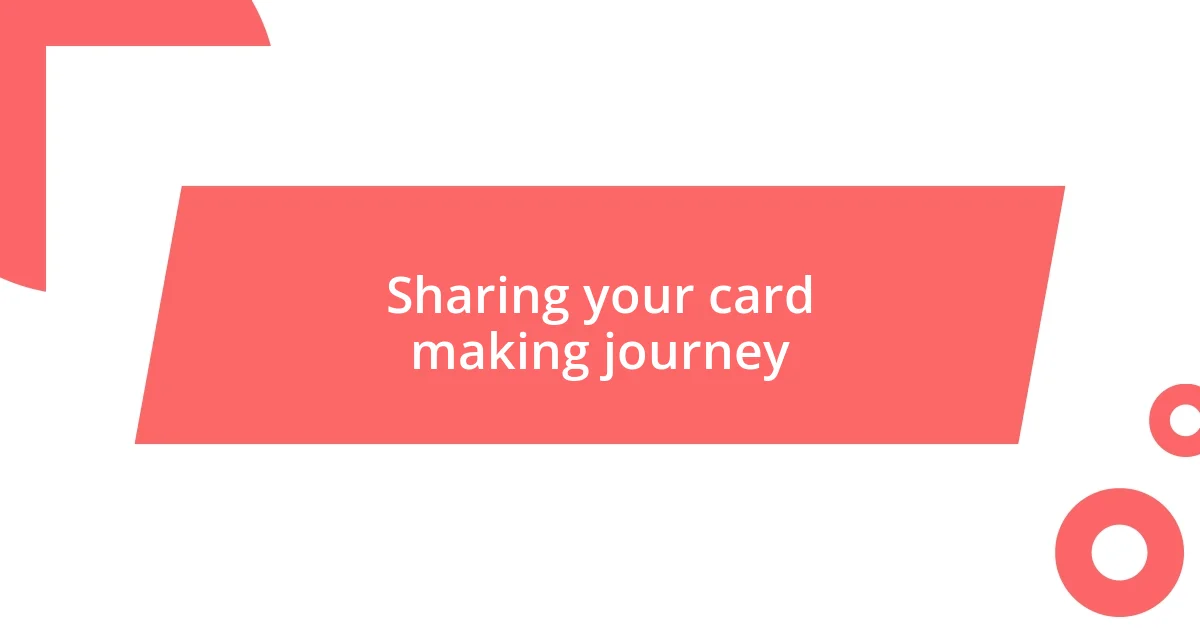
Sharing your card making journey
Sharing my card making journey has truly been a transformative experience, both creatively and emotionally. I remember posting a picture of my first batch of handmade cards online, nervous about the feedback. To my surprise, the response was overwhelmingly positive, with friends sharing their own stories and showing interest in making cards as well. Isn’t it amazing how sharing our passions can inspire others?
Connecting with fellow card makers has enriched my experience beyond measure. I once joined a local crafting group, and that decision opened up a world of ideas and techniques I hadn’t considered before. The camaraderie we built while exchanging tips and celebrating each other’s milestones felt like a family gathering. How have others’ journeys influenced yours?
I’ve found that documenting the process adds another layer to sharing. Taking photos of each step—from the initial idea to the final product—has allowed me to appreciate how far I’ve come. When I looked back at my early efforts, I couldn’t help but smile at my growth. It’s a reminder that every artist’s journey is unique, and sharing those milestones, both big and small, can resonate deeply with others. What moments would you choose to highlight in your own narrative?










